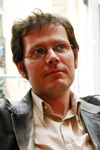Thursday’s edition of EGU Today features an edited version of Quirin Schiermeier daily column. The full version is published here on GeoLog!
In sheer numbers, the death toll from natural disasters – about 80,000 in an average year – is small compared to the millions who get killed each year in road accidents or die from avoidable diseases. But averages miss the point here. It is the very exceptionality and enormity of catastrophes like last year’s deadly Tohoku earthquake and tsunami in Japan that can change regions and countries forever. In many parts of the world, poverty and galloping urbanization add to the risk. From Bangladesh to Haiti, large impoverished populations are exceptionally vulnerable to cyclones, floods, earthquakes and volcanic eruptions.
The science of assessing the risks of such disasters, and the technology for coping with them, has without doubt improved. But the science behind actually predicting disasters is uncertain at best, and for some of the most devastating events, earthquakes and tsunamis among them, prediction is virtually impossible.
To help local authorities and vulnerable populations to prepare to future disasters, geoscientists studying fault ruptures, tsunami propagation or cyclone dynamics need to find better ways to disseminate their findings. Emergency planners in Haiti and elsewhere don’t usually read the scientific literature – imaginative communication strategies are therefore needed to forge more effective links between the two groups when it comes to designing early warning systems and disaster mitigation efforts around the world. That Japanese emergency planners and nuclear plant operators fatally underestimated the tsunami risk to Honshu coastlines – supposedly the best-protected coast in the world – is a dire reminder of the human tragedy that can result from any false sense of safety.
Science and technology are vital for disaster reduction – and geoscientists and engineers have a responsibility to provide the best science and technology they possibly can. But effective disaster mitigation has social and political dimensions – including poverty reduction and education – that need be tackled with the same sense of urgency.
Unfortunately, this is not always quite understood. If anything, the bizarre trial of six Italian researchers for manslaughter over their alleged responsibility for the death of 309 people killed in the 2009 earthquake in L’Aquila – prosecutors claim the scientists gave a falsely reassuring statement before the quake – highlights the unsettling level of misconception about geoscientists’ profession and responsibility. Today’s Great Debate on the Role and Responsibilities of Geoscientists for Warning and Mitigation of Natural Disasters should be a good forum for discussing these issues – courtrooms certainly aren’t.
By Quirin Schiermeier, Nature‘s Munich correspondent

